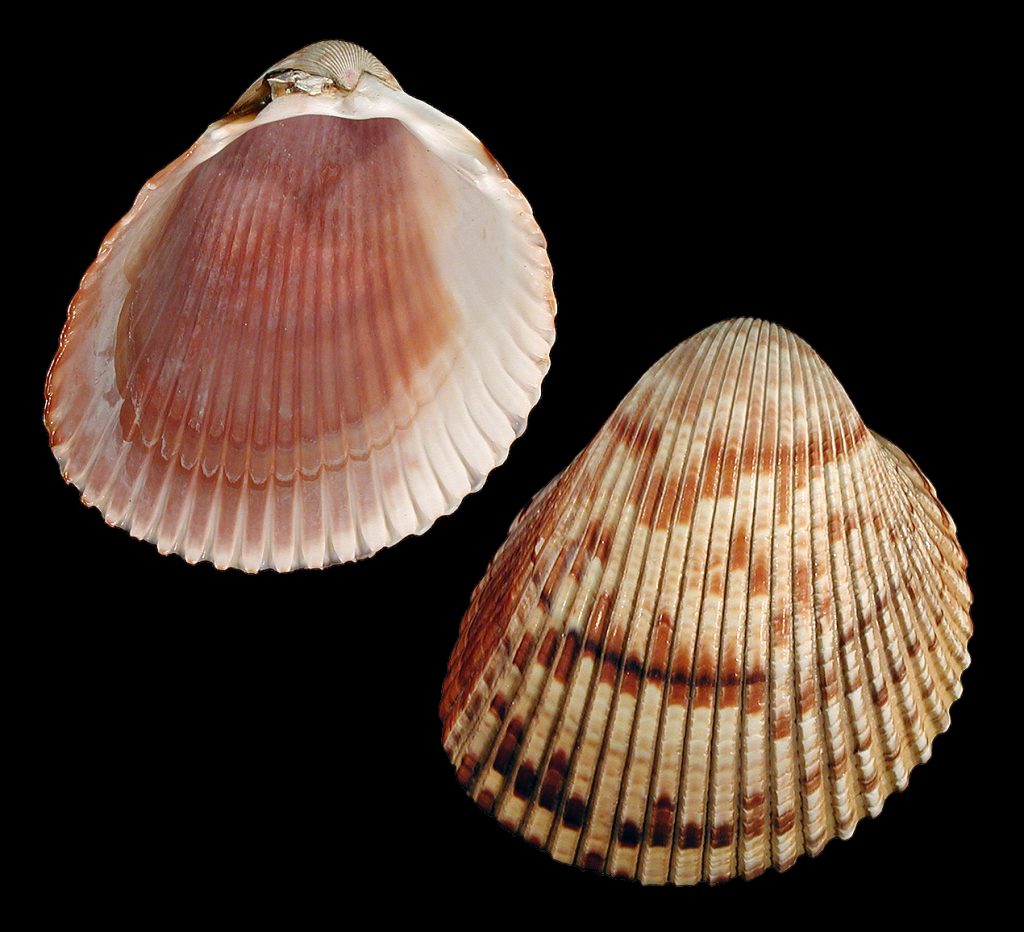Shell size to 67 mm; shell rounded, inflated. Sculpture of 27-32 strong radial ribs bearing sharp scales. Umbones central. Internally glossy. Color creamy-white to tawny-gray, with yellowish, orange, brownish and/or purplish patches. Internally bright salmon, reddish, and/or purple. Albinistic specimens are sometimes found on the barrier islands of SW Florida. The albinistic specimen illustrated was found by José H. Leal on March 20, 2010, under the Sanibel-Captiva Bridge on Blind Pass.
Read More







